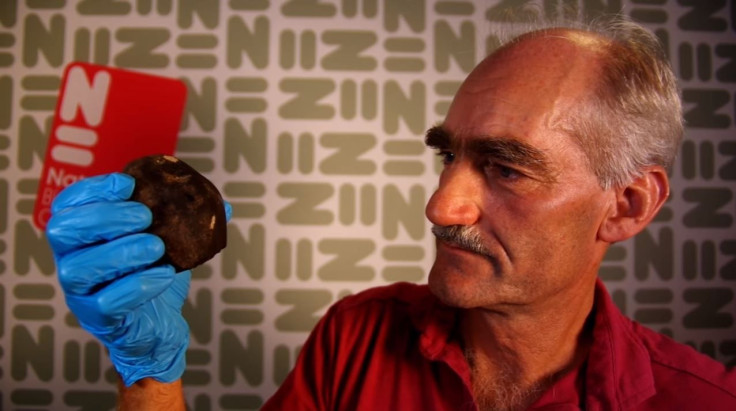Meteorite As Old As Earth Can Tell Us How Solar System Formed

A meteorite the size of a fist that came crashing onto a roof in the Netherlands earlier this year is as old as the Earth itself, Dutch scientists are saying. This means the meteorite could tell us a lot about how our planet and our solar system formed.
“We do not have rocks of this age on Earth,” geologist Leo Kriegsman said in a video from Naturalis Biodiversity Center in Leiden. “We can learn from it what happened in the very beginning of the solar system: When you had sort of a stellar cloud that collapsed, when minerals started to form, when planetoids started to form for the very first time. So it gives us information on what happened at the very beginning when the Earth was formed.”
Read: Asteroids in the Mars Orbit Are the Remains of a Dead Planet
The space rock was filmed coming down in a streak through the air and then went through a roof in the Dutch village Broek in Waterland, which is near Amsterdam, on Jan. 11. According to Kriegsman, it is about 4.5 billion years old — around the same age as the Earth — and probably came loose from the asteroid belt, a ring of rocks between Mars and Jupiter.
Although it’s about the size of a fist and weighs about a pound, it would have been much larger before it started to burn up in our atmosphere, perhaps 10 or 20 times bigger, Kriegsman said. And before it was even that size, “it was probably a planetoid” that collided with another. The explosive crash would have sent debris outward, and this meteorite represents one piece of that debris that landed on Earth.

While this rock, dubbed the Broek in Waterland meteorite, was in outer space, it would be called a meteoroid or an asteroid, depending upon its size. As such a rock burns up in Earth’s atmosphere, it is called a meteor or a shooting star. It’s only the rock that is left over from the fiery entry and lands on the surface that is called a meteorite.
As it reaches Earth, it will be speeding at hundreds of miles a minute. The atmosphere will slow down the meteor quite a bit, but even so, “if it would hit you, it would be fatal,” Kriegsman said.
Read: Is a 10th Planet Hiding Among Asteroids in the Outer Solar System?
The geologist told Agence France Presse that the scientists at Naturalis waited to announce their finding until they had finished preliminary tests on it: “We wanted to be 100 percent sure of what kind of meteorite it was, so we needed to carry out some research first.”
The one-pound chunk is all the scientists have to go on. After the residents of the property with the shed roof where the meteorite crashed down reported finding the object, the scientists searched the area for more pieces, but they didn’t find any.
New meteorite found in the Netherlands! The 6th ever. https://t.co/sC6OUEny2D
That’s not unusual, as meteorites are not found on the ground as often as they probably fall. Kriegsman explained in the Naturalis video that there will be one the size of a fist landing about once every four years in the Netherlands, but scientists only find one roughly every 30 years. The Broek in Waterland meteorite is just the sixth they have found in Holland.
© Copyright IBTimes 2024. All rights reserved.




















